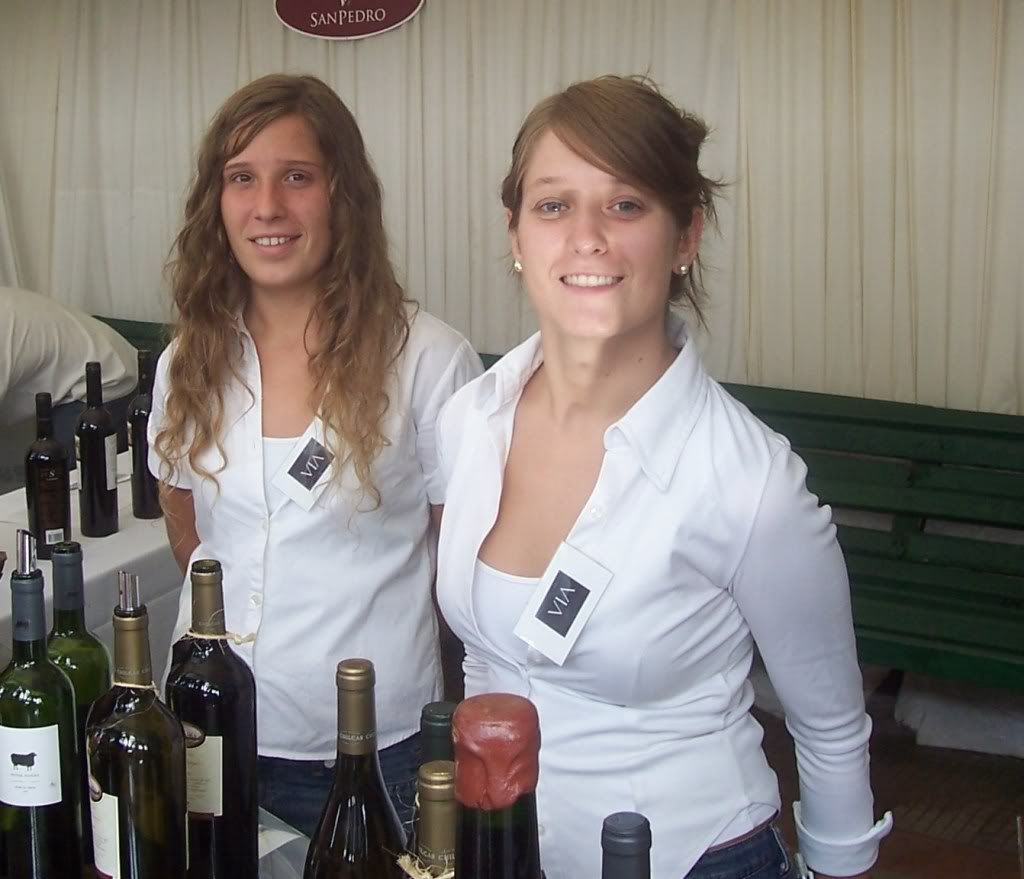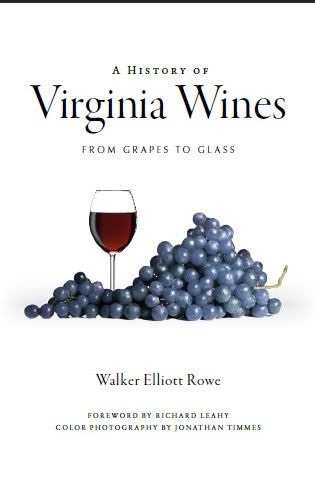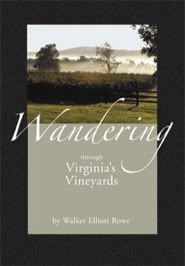In the 16th and 17th centuries wine-drinking Spanish Jesuits settled the American West and Mexico at the same time as tee totaling Puritan English settled the East. The Jesuits made it all the way to San Diego where they planted Mission grapes. These thrived in the dry summers and warm winters. The English likewise planted grapes in Massachusetts and Virginia. These died in the humid summers and bitter winters.
Before either settler arrived, Viking Norsemen found grapes hanging from almost every tree in the great forest they called Vineland. These old trunks grew to such a girth that their weight threatened to bring down the tree on which they hung.
At first the newcomers to the New World were thrilled to find so many grapes. The Germans and Italians tried to make wine from the native grapes: vitis labrusca, vitis raparia, and vitis rupestris. But these made inky dark wines that smelled of bubble gum and tasted like grape jam. The American wines were not subtle like those from Europe.
Undaunted the President of the United States and Ambassador to France, Thomas Jefferson, hired 30 Italians to plant Old-World European vitis vinifera grapes on his Monticello, Virginia estate, but they failed to thrive. They were trampled by horses belonging to Hessian mercenary soldiers and neglected by the President himself when he left to press the Revolutionary war with England. Jeffersons vines grew for a few years but then yielded to the diseases and pests which were not found in their native European soils. The President gave up growing grapes and went back to drinking apple cider and importing expensive claret.
The situation in the former English colonies is much changed today. Modern agricultural sprays can defeat the mildew and rot that can ruin a harvest in the humid east. In the 1940s and 50s a Ukrainian 魩gr頴o New York put forth the notion that vitis vinifera could survive sub-zero winter cold if the vines were fully ripe when they entered their dormant period.
Today wine grapes are grown up and down the Eastern Seaboard. But the nascent industry has achieved a critical mass in only two states: New York and Virginia. This essay will focus on Virginia.
Here in the Dominion state maple trees are flowering and the honeysuckle is growing. Dormant grape vines are beginning to stir as they shake off their winter malaise and begin to feed off starches and sugars stored in the xylem of the wood. In a few weeks the shoots will emerge and then the grape flowers blossom. Their upside down petals will open and fall off releasing a perfume of fragrance that is redolent in the air.
Growing wine grapes on the East Coast is quite different from growing them west. In California the sun always shines and it practically never rains. So growers easily grow and make tens of millions of cases of fine Zinfandel and Cabernet Sauvignon wines plus oceans of desert-grown wines of lesser quality. Yet missing from California viticulture is the Virginian, New Yorker, and French notion of vintage or variation in the quality of the wine due to the weather. Because of the vagaries of the climate, in Virginia the years 1998, 2001, and 2002 stand out as stellar years. The grapes were clean with sufficient sugar and the tannins were ripe. Red grapes could cold soak for days on their skins to extract maximum color, flavor, and aroma. White grapes were aromatic and fruity. But in 2003 Hurricane Isabel raced through the prime winegrowing regions dumping too much rain on an already soggy crop. Those grapes that did not rot made for the most part wines that were thinner and with sometimes bitter unripe tannins. Such grapes require extra care to keep astringency out of the bottle. For reds the end result is more Chinon than Bordeaux.
Virginia wines are varied in their quality and variety grown. A consensus has emerged as to which grapes are best suited to the terroir. While some farmers still plant Riesling and Gewminer these wines are low in acid, flabby, and lack the mineral overtones of the best from New Yorks Finger Lakes or the steep river banks of Alsace and Moselle. But for Virginia growers who plant the right grapes their wines merit the relatively expensive $18-$28 per bottle price.
Among the best Virginia wineries is Michael Shaps and King Family Vineyards. They grow and produce some 5,000 cases of premium quality Merlot, Cabernet Franc, and Viognier wines each year. David King is the viticulturist on his sprawling estate. His enthusiasm for planting wine grapes is contagious. This former Texas lawyer retired to farming will tell you that his Petit Verdot varietal is planted on vitis riparia rootstock in deep Albermarle loam soils. Davids winemaker and business partner is Michael Shaps. Michael is a New York State expatriate educated in Burgundy and steeped in all things French. In the Burgundian tradition, Michael presses his Cabernet Franc grapes, cold soaks them for days, and then lets 10% of the juice run down the drain in the floor. The remaining juice has greater texture, aroma, and flavor because it has had more content with the skins.
Michael Shaps and King Family are planting the wine grapes which experience suggests are perfect for the climate and soils of Virginia. Cabernet Franc does well here. This red grape of Bordeaux does not require as long a growing season as its cousin Cabernet Sauvignon. The success of Cabernet Franc in Virginia was recently noted by British writer Michael Broadbent.
The other leading grape in Virginia is Viognier. The 2002 Michael Shaps Viognier tastes of peaches and apricots. It has a lovely glycerin meniscus and viscosity that causes it to linger on the palette due in part to a slight residual sugar.
Viognier is to Virginia as Pinot Noir is to Oregon. To wit: it is the grape that has brought Virginia national attention. In 2002 a Virginia Viognier won Best White Wine of Show at the prestigious San Diego wine show. And in 2003 another Viognier won the same award from the Atlanta Wine Summit. Readers of The Wine Spectator would not know that because those glossy wine-buying guides for the most part ignore Virginia. The quality of Virginia wines is still too varied and there is not enough acreage planted where you could find these wines in, say, London.
At the other end of the state perched on a steep slope some 1,500 feet above Faquier County, Jim Laws Linden Vineyards are a testament to his notion that vineyards should be planted on the meager soils of the hillsides rather than down on the rich pasture lands. His Bordeaux blends of Petit Verdot and Cabernet Sauvignon are among the best in the state and certainly most expensive. Jim Laws wines warrant the extra expense because his vines are meticulously clipped and pruned like roses. He actually drops some fruit on the ground to ensure that what is left on the vine ripens evenly with the highest possible concentration of flavors.
Another grape which does well in Virginia is the Petit Manseng from the Jurancon region of France. With its thick hide, it holds up well in rain and does not fall apart like, say, Pinot Noir would. Chrysalis Vineyards makes their Petit Manseng into a dessert style wine. The grape ripens to 29 Brix (an indicator of sugar level) in the Virginia sun and makes a unique gold-colored wine that tastes of cinnamon, honeysuckle, and almonds.
There are only a few wineries in Virginia that can wear the moniker big. None are so big that you could find their wines in Europe, but you can find them in New York City. Among the wineries in this category is the Italian winery Barboursville. Planted in 1976 this was the first large winery founded in the state. Its owners, the Zonin family, own the largest privately held vineyards in Italy. In Virginia they make bright, acidic Pinot Grigio wines as well as heavily extracted Cabernet Franc wines with layers of ripe blackberry and cherry flavors.
On occasion Virginia wines get recognition in the national press. Sometimes it is the business pages of Fortune for Patricia Kluge, ex-wife of billionaire John Kluge, has planted a vineyard here. Her New World Red, made by world-renowned French winemaking consultant Michel Rolland, costs an eye-popping $60. Rock star Dave Matthews of the Dave Matthews band owns a vineyard here. And Governor Mark Warner, who founded Nextel cellular phone company, has a 15-acre vineyard as well.
Robert Mondavi wrote in his memoirs that in the 1970s the Napa Valley of California was a rural backwater. Then you could not order a California wine in New York restaurants. Thirty-five years later, through tireless marketing and greatly improved farming and winemaking, California wines now are exported and sought after worldwide. Virginia wines will perhaps never compete with California on the price/quality ratioit costs more money to plant grapes here than most places. But for those who wish to drink world-class wines you can definitely find those in Virginia if you go to the proper wineries.
Tuesday, April 22, 2008
Subscribe to:
Post Comments (Atom)






No comments:
Post a Comment